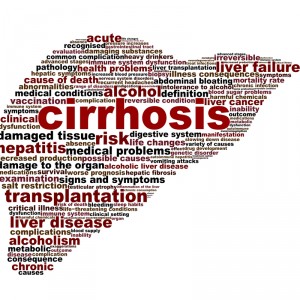A recent study evaluated the incidence of cirrhosis in the general American population. The study entitled “The Epidemiology of Cirrhosis in the United States: A Population-based Study” was published in the Journal of Clinical Gastroenterology by Dr. Steven Scaglione from the Department of Internal Medicine, Division of Hepatology, University of Michigan Health System, and colleagues. This study was the first of its kind to evaluate the incidence of cirrhosis in the general population.
The research team analyzed data from the National Health and Nutrition Examination Survey (NHANES), an annual survey of a representative sample of U.S. adults conducted by the Centers for Disease Control and Prevention. The incidence of cirrhosis corresponded to 633,323 adults in the United States — a higher value than previous estimates of around 400,000 people.
“Although some of these individuals may simply have forgotten or been confused about the question, this raises the possibility of a large number of undiagnosed cases of cirrhosis,” said Dr. Steven Scaglione, and colleagues in a news release.
Dr. Scaglione said that the most relevant factors that contributed to the development in more than 50% of the cirrhosis cases were alcohol abuse, diabetes and hepatitis C.
Importantly, 69% of the individuals stated that they were not conscious of having liver disease. The incidence was higher in non-Hispanic blacks and Mexican Americans living at the poverty level and with an education lower than 12th grade.
The authors acknowledged that the study has some limitations, such as the method used to assess liver disease, aspartate aminotransferase-to-platelet ratio (APRI), which may not be specific enough for cirrhosis diagnosis. It was also a cross-sectional study, i.e. the analysis of data from a specific population, or a representative subset, at one specific point in time and not following the population over a period; and the NHANES survey did not include prisoners, immigrants and military veterans.
Overall, the incidence of cirrhosis is higher than formerly estimated. More than 50% of the cases could have been avoidable by controlling diabetes, alcohol abuse, and viral hepatitis. Importantly, there has to be public health efforts to decrease this disease burden, mainly between racial/ethnic minorities and individuals with lower socioeconomic class.
In the United States, liver cirrhosis is a significant public health problem and a relevant source of morbidity and mortality. Liver cirrhosis is the final stage of fibrosis of the liver and can lead to liver failure and liver cancer. Although some individuals may not have symptoms, the most commonly observed signs are jaundice, fatigue, bleeding or bruising easily, nausea, swelling and confusion. In the U.S., cirrhosis is ranked the 5th leading cause of death for patients between 45 to 54 years old.


